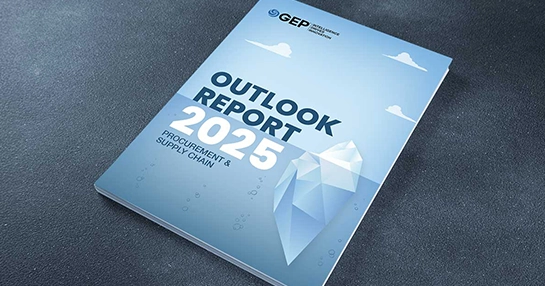
Can Supply Chains Pass the Holiday Season Stress Test?
- Retailers are now passing on 67% of tariff costs to shoppers, compared with 22% at the start of this year.
- Forecasts call for double-digit declines in shipments to U.S. ports through year-end, increasing risks of shortages in popular categories.
- Even if tariff policy shifts next year, shipments ordered under higher costs will keep prices high and inventories tight.
October 08, 2025 | Supply Chain Strategy 4 minutes read
What does the upcoming holiday season look like for retailers, consumers and businesses? Will it be business as usual for retailers with spikes in consumer demand? And should consumers brace for higher prices on their favorite buys?
The holiday season has always been a high-stakes test for supply chains. This year, the challenge is sharper than usual.
Tariff volatility, shifting trade policies, and inflationary pressures are forcing retailers to rethink how they balance supply, cost, and customer expectations. For supply chain leaders, the fourth quarter of 2025 is more than a shopping rush.
Let’s look at how global disruption influences consumer behavior and long-term business resilience.
Higher Prices, Fewer Choices Can Lower Consumer Sentiment
Shoppers are likely to have fewer choices and tighter budgets in the upcoming busy shopping months. Early in the year, many retailers tried to shield customers from tariff costs. They absorbed higher import duties within their margins, passing on only a fraction of the increase to consumers.
By mid-2025, this approach became unsustainable. Inventories stocked before tariffs took effect were depleted, and import costs continued to rise.
The result is stark. Goldman Sachs research estimates that consumers now carry up to 67% of tariff costs, compared with only 22% at the start of the year.
For consumers, this shift means paying more for everyday items, as inflation rises at the same time. The impact is real for families.
Tariffs and the New Logistics Gamble
As consumers may spend less freely this holiday season, supply chain and procurement professionals must step up their game. What products to stock and how to price them becomes a challenge.
Tariff announcements and deadlines have turned procurement into guesswork. Businesses rushed to import goods before new duties took effect, resulting in record cargo volumes at ports in July.
The Port of Los Angeles reported handling more than 1,019,837 twenty-foot equivalent units (TEUs) in July 2025, its busiest month on record. But that early surge to bet on the tariffs creates a problem. Several industry data sources expect import declines through 2026.
The Mastercard Economics Institute report forecasts retail sales to rise 3.6% between November 1 and December 24 this year, compared to a 4.1% growth in the same period last year.
Popular categories such as toys are anticipated to take the biggest hit. According to the Toy Association, U.S. imports of toys from China fell 47% year-over-year in June 2025.
As a result of supply chain disruptions, tariffs, and potentially falling demand, holiday promotions are becoming sharper and more targeted.
Product assortments will narrow, reducing the complexity of managing fluctuating inventories. Retailers will prioritize predictability, even if that means forgoing potential sales.
Even if tariff policies shift in 2026, the lag effect will remain. Goods ordered months earlier will continue to arrive under higher cost structures. Inventories are already burdened with tariffs, and those costs will carry forward well into the new year.
Lessons for Supply Chain Leaders
• Resilience requires optionality
Companies with dual sourcing strategies recover faster from disruptions than single-source firms.
• Data visibility drives agility
Enterprises that leverage advanced analytics in procurement see 15% higher accuracy in demand forecasting.
• Customer experience still matters
Clear communication and transparency can preserve loyalty, even when prices are high or product availability is tight.
• Policy risk must be built into strategy
Treat tariff volatility like other recurring macroeconomic risks, not as exceptions.
Preparing for 2026 and Beyond
Looking ahead, supply chain leaders must accept that volatility is not a passing phase. The coming years are likely to bring further shifts in trade policy, inflationary pressure, and geopolitical realignments that will impact sourcing and logistics.
For procurement and supply chain teams, resilience depends on three actions:
• Invest in AI-powered decision support
Agentic AI and advanced analytics can simulate tariff impacts, forecast demand with greater accuracy, and recommend sourcing alternatives in real time.
• Redesign networks for flexibility
Nearshoring, friendshoring, and diversified supplier bases can reduce dependence on high-risk corridors.
• Balance cost with customer value
Passing costs to consumers may be unavoidable, but doing so transparently helps preserve trust and long-term loyalty.
Shifting from Reaction to Resilience is Key
The 2025 holiday shopping season is expected to differ from past years. Retailers will manage thinner inventories, higher costs, and cautious consumers. Families may see fewer options under the tree. Yet for supply chain leaders, this moment is more than a temporary disruption. It is a turning point.
The lesson is clear. Supply chains can no longer operate on assumptions of stability. They must be designed for constant change, with built-in agility to navigate tariffs, trade shifts, and global uncertainty. This holiday season may feel like a gamble, but the long-term opportunity lies in shifting from reactive bets to strategic control.
The companies that succeed will not only weather 2025 but also shape the next era of resilient, customer-centric supply chains.
Discover More: GEP Tariff Management Resource Center



